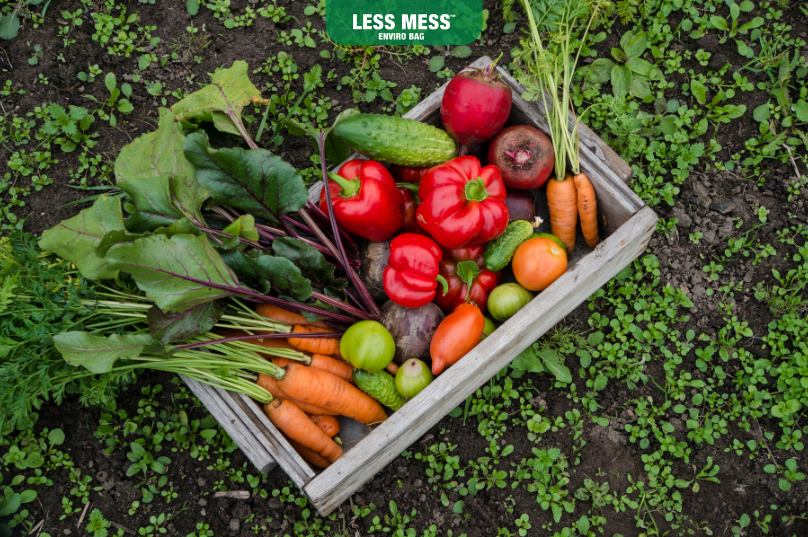Growing Vegetables in your Garden
There's nothing quite as rewarding as harvesting your own vegetables straight from the garden to your plate. Growing your own vegetables not only ensures a steady supply of fresh and healthy produce but also allows you to connect with nature and embrace sustainable living. Whether you have a spacious backyard or a tiny balcony, cultivating vegetables is a fulfilling and enjoyable experience. Less Mess has some amazing tips for all gardeners out there! In this blog, we'll explore the essential steps and tips to successfully grow your own vegetables.

1. Choose the Right Location
The first step in growing vegetables is selecting the perfect spot for your garden. Most vegetables require ample sunlight, preferably 6 to 8 hours per day. Pick a location with good drainage to prevent waterlogging. If you have limited space, consider vertical gardening or using containers on a sunny balcony.
2. Plan Your Garden
Before you start planting, create a garden plan. Consider the vegetables you'd like to grow and their specific requirements. Group plants with similar needs together, such as those that need more water or shade. Planning helps maximize space and ensures you make the most of your garden.
3. Prepare the Soil
Healthy soil is the foundation of a thriving vegetable garden. It is important to have quality soil that will boost the growth of these vegetables. Less Mess Premium Garden Blend is designed for maximum growth potential and is also screened for uniform particle size.
4. Start with Easy-to-Grow Vegetables
For beginners, it's wise to start with vegetables that are relatively easy to grow. Some excellent choices include lettuce, radishes, tomatoes, cucumbers, carrots, zucchini, and peppers. These plants are generally forgiving and offer a good chance of success, boosting your gardening confidence.
5. Planting
Follow the guidelines on the seed packets or seedlings for planting depth and spacing. Different vegetables have different requirements. Generally, plant seeds in rows or raised beds, keeping enough distance between plants to allow them to grow and get adequate sunlight. Water the newly planted seeds gently but thoroughly.
6. Watering
Consistent and appropriate watering is crucial for the health of your vegetable plants. Too much or too little water can lead to various problems. Use a soaker hose or drip irrigation to ensure that water reaches the roots without wetting the leaves excessively, as wet foliage can invite diseases. Water early in the morning to minimize evaporation.
7. Mulching
Mulching helps retain soil moisture, suppresses weeds, and maintains a stable soil temperature. Apply a layer of mulch around the plants to protect them.
8. Pest Management
Keep a watchful eye on your vegetable plants for any signs of pests or diseases. Early detection can prevent potential disasters. Embrace natural pest control methods like introducing beneficial insects, using companion planting, or making homemade organic insecticides.
Growing vegetables is a wonderful journey that connects us with nature and encourages sustainable living. With the right location, soil preparation, and diligent care, your vegetable garden will flourish. As you gain experience, you can expand your variety of crops and experiment with more challenging vegetables. So, roll up your sleeves, put on your gardening gloves, and embark on this fulfilling adventure of growing your own vegetables. Happy gardening!




